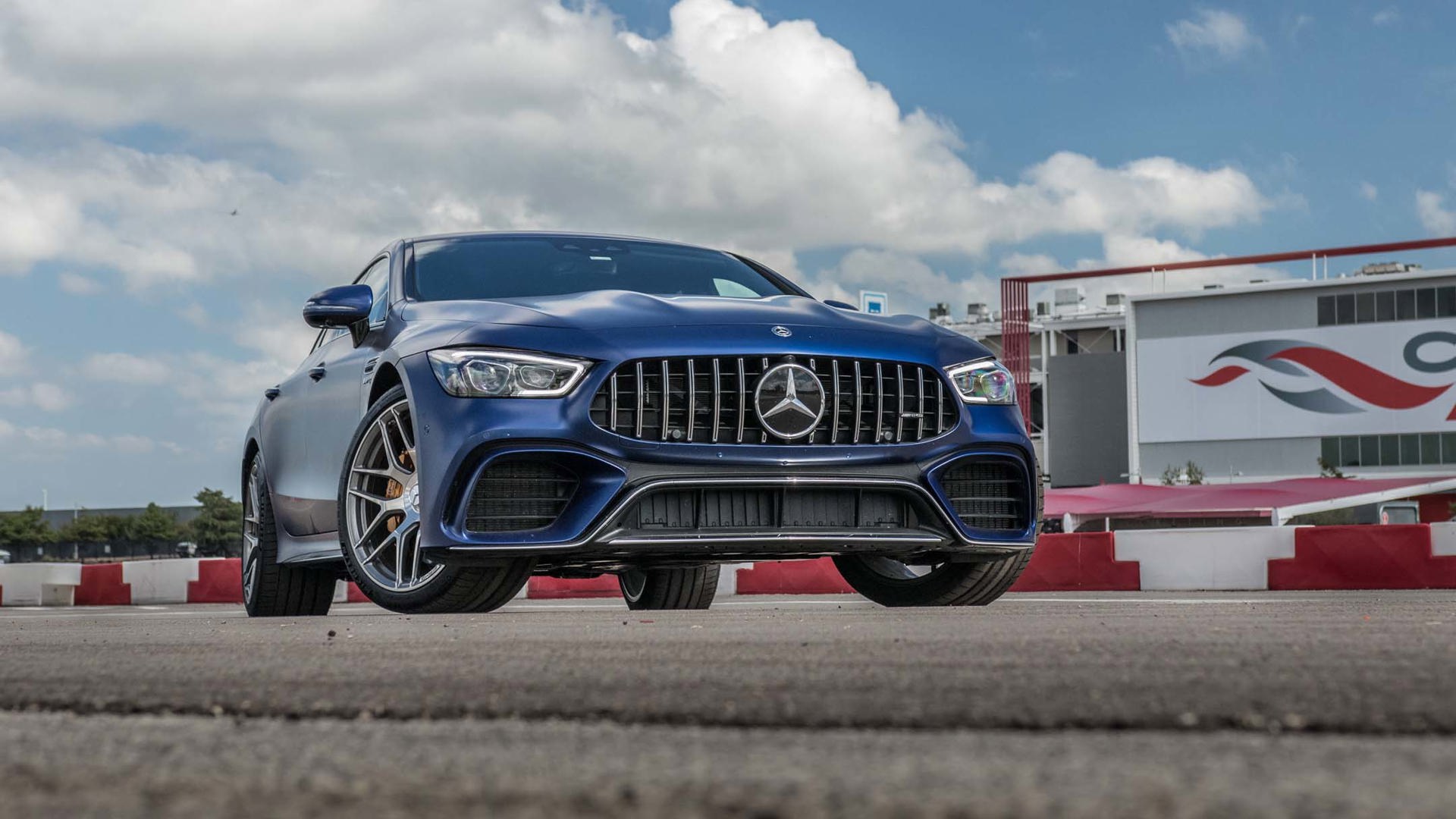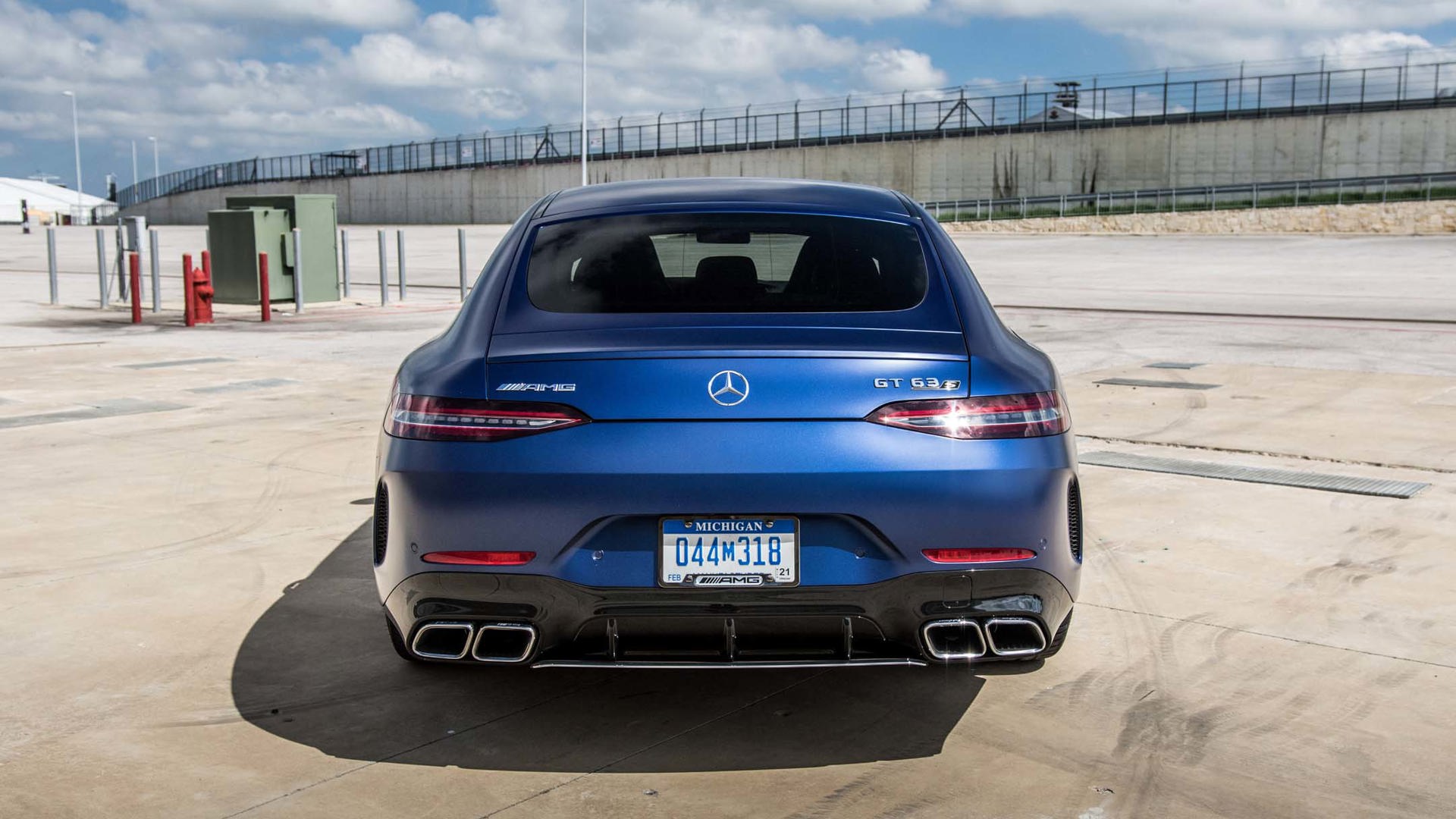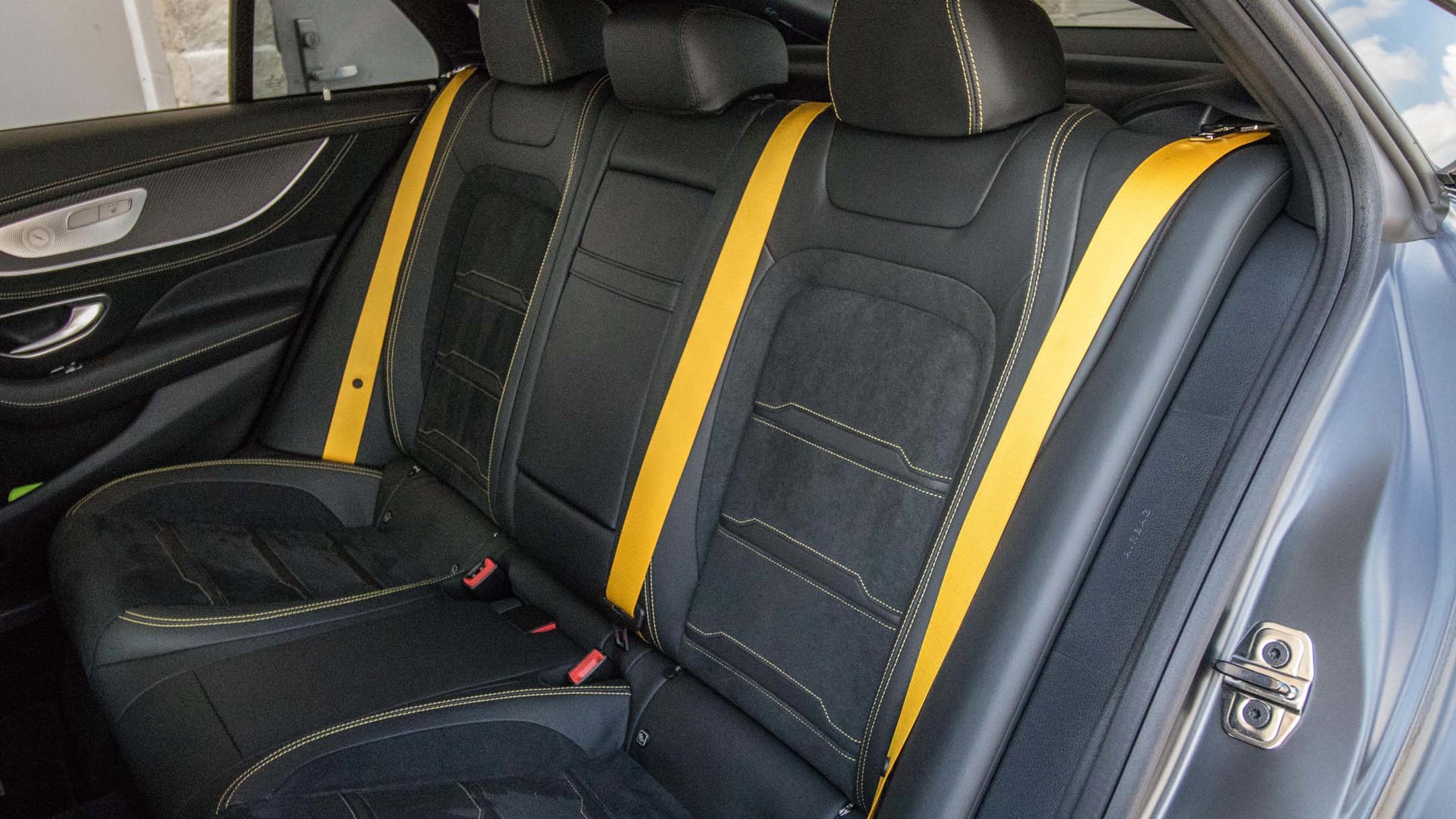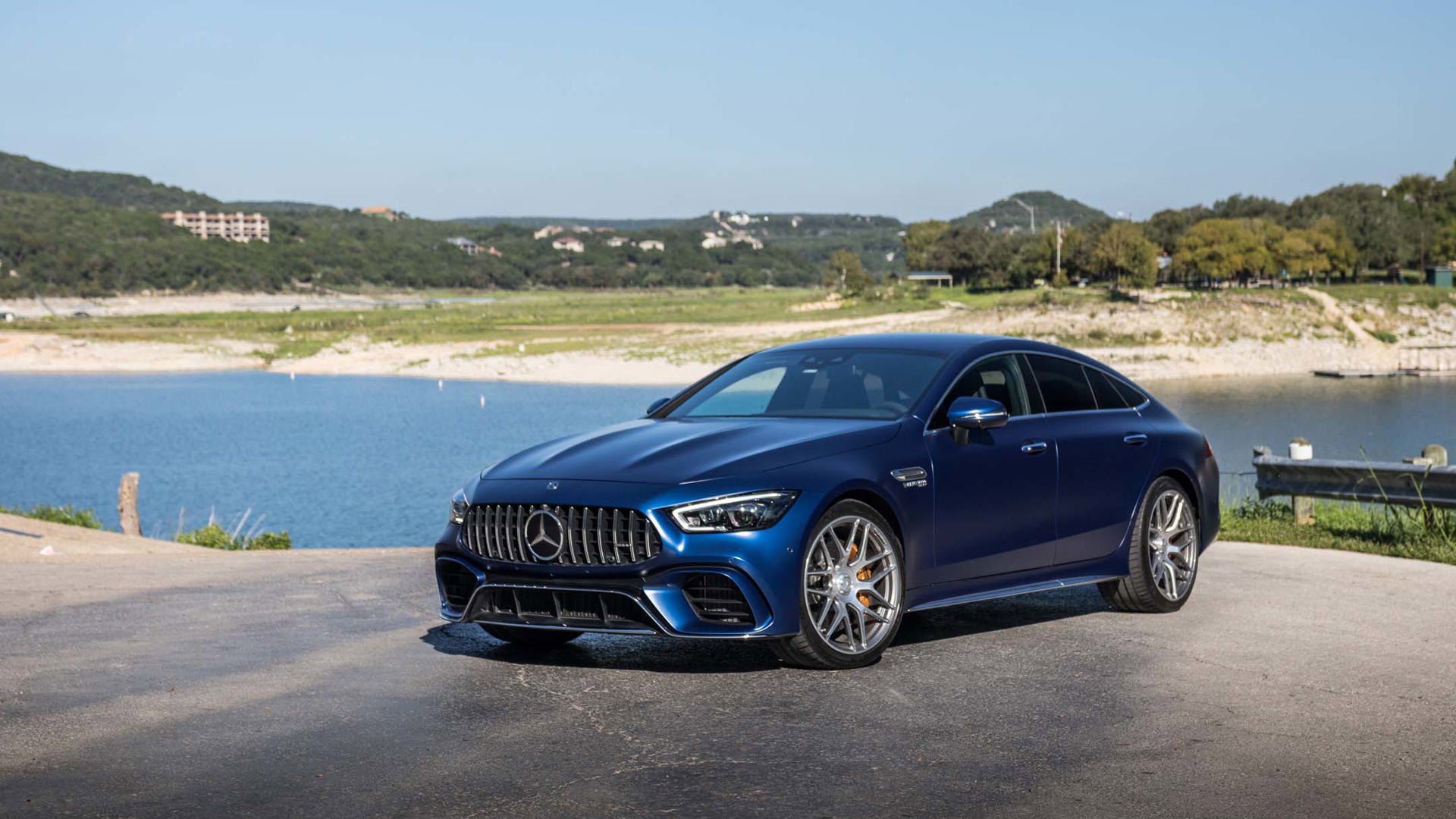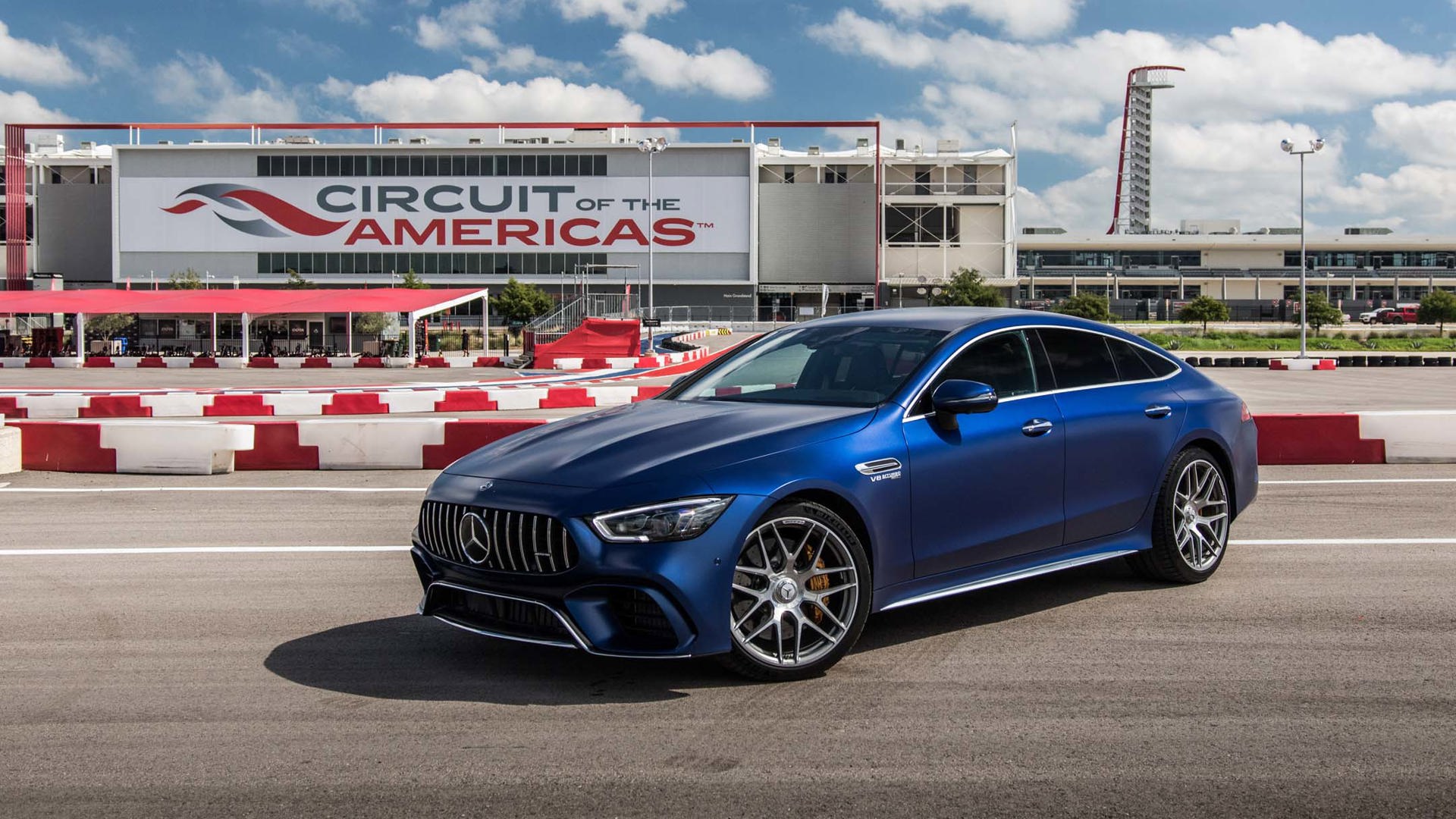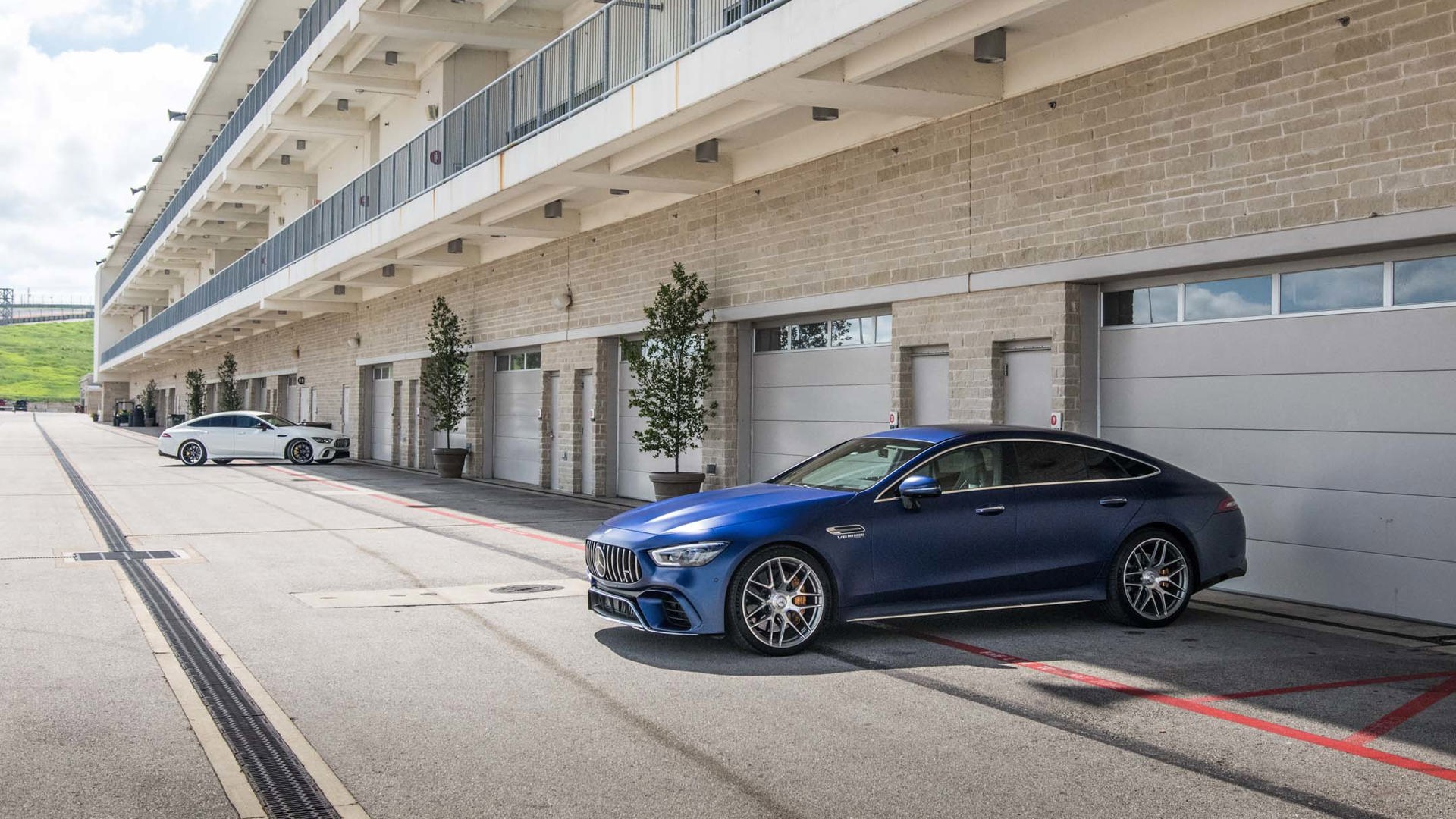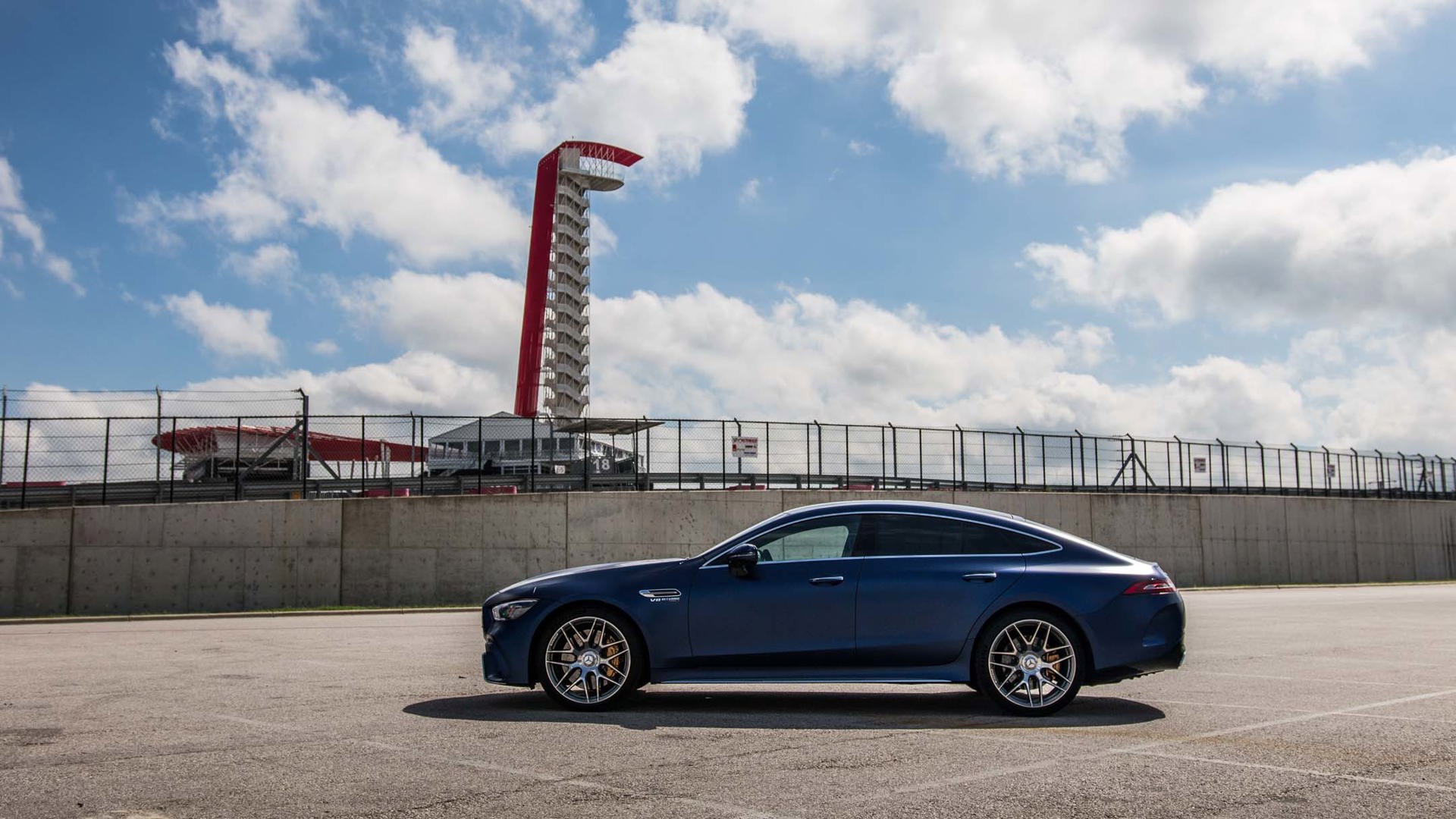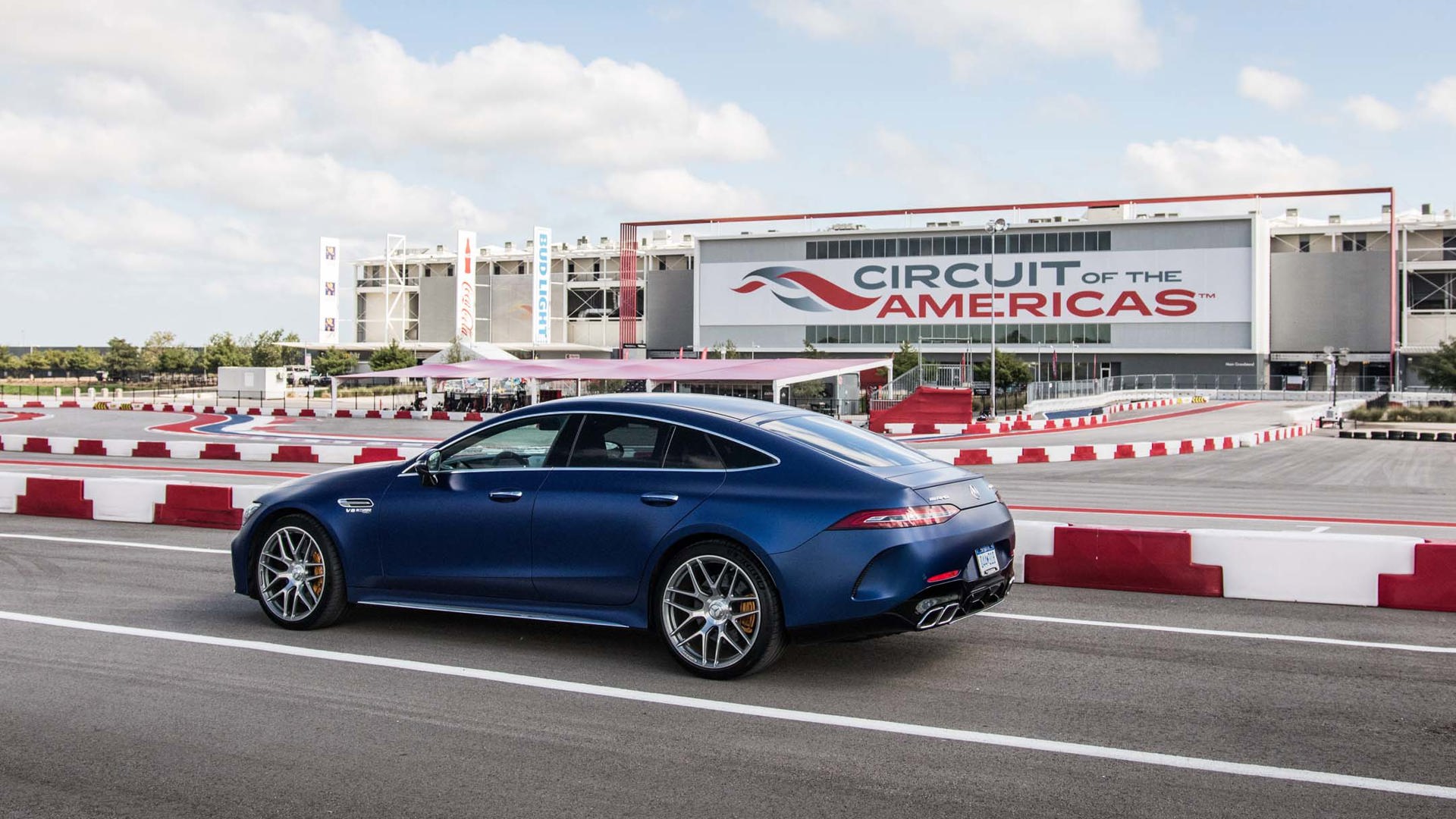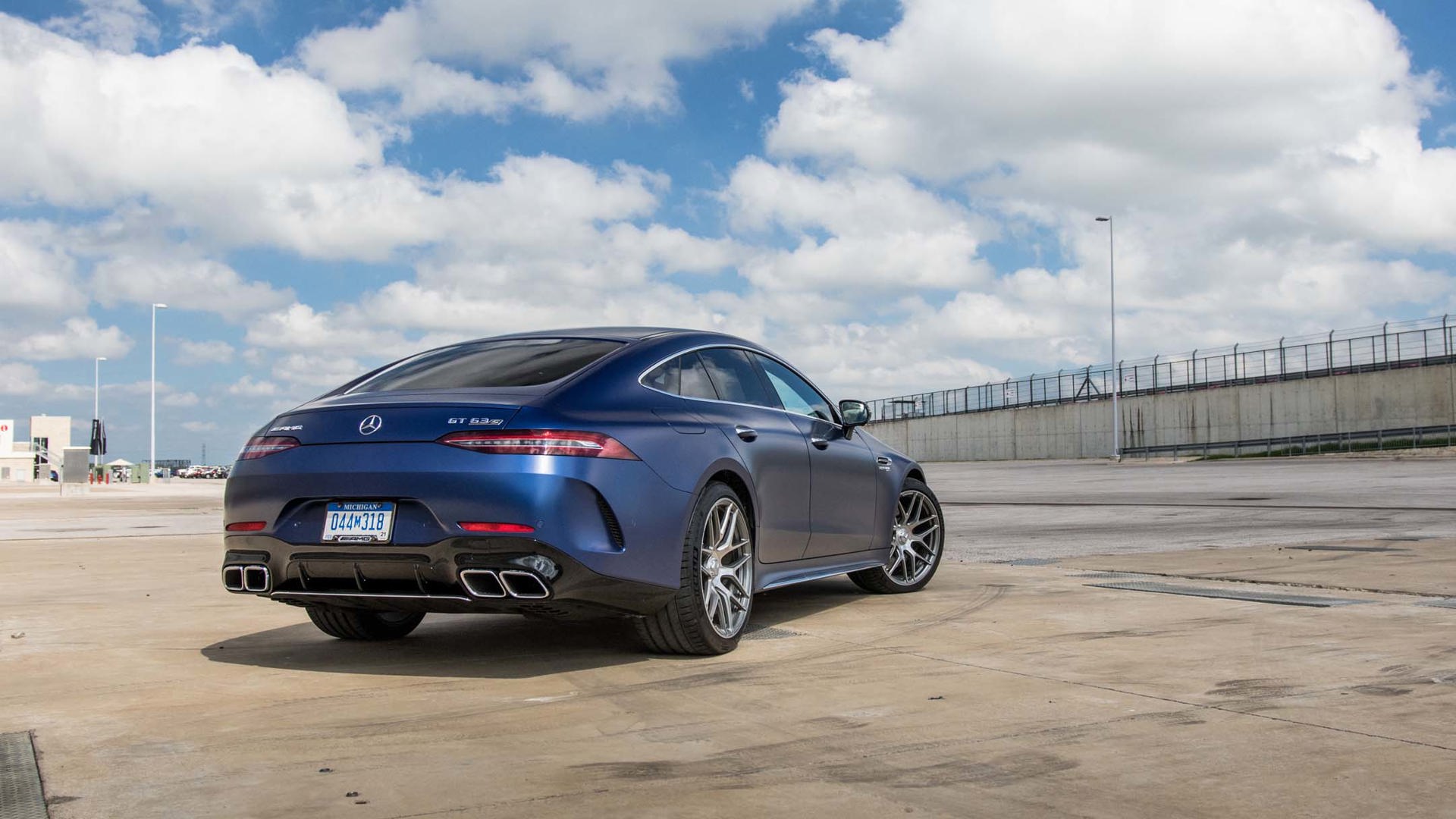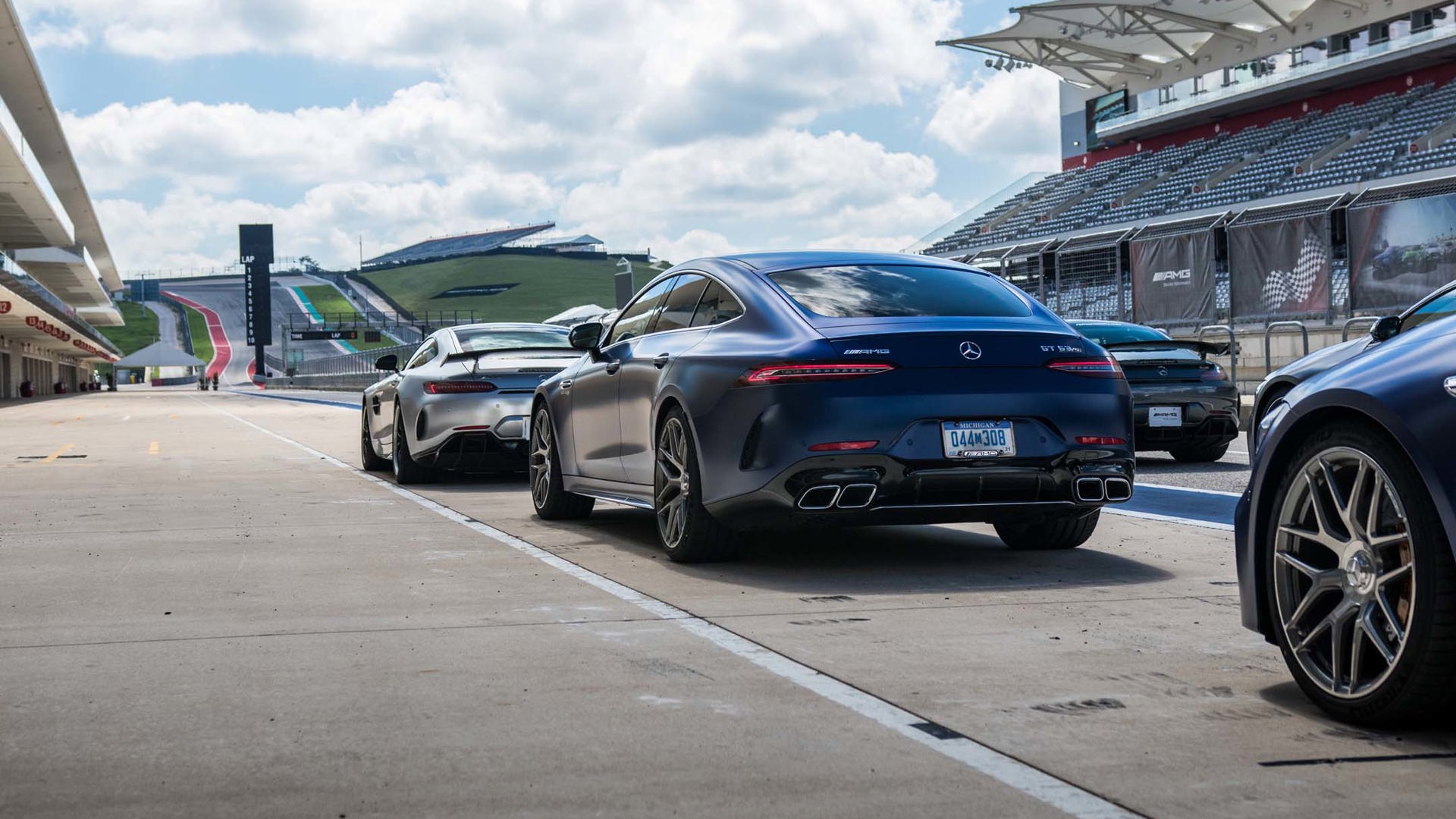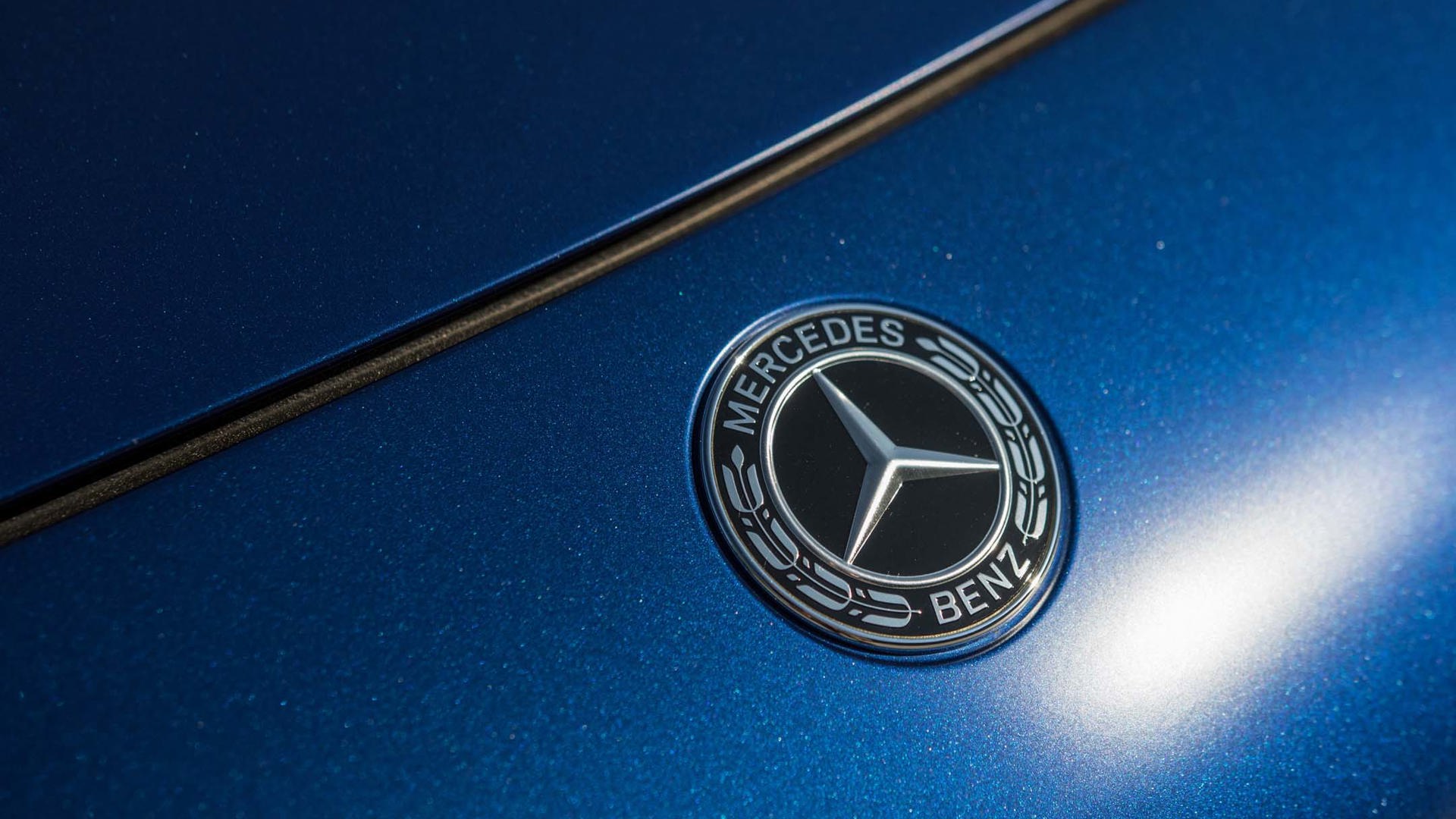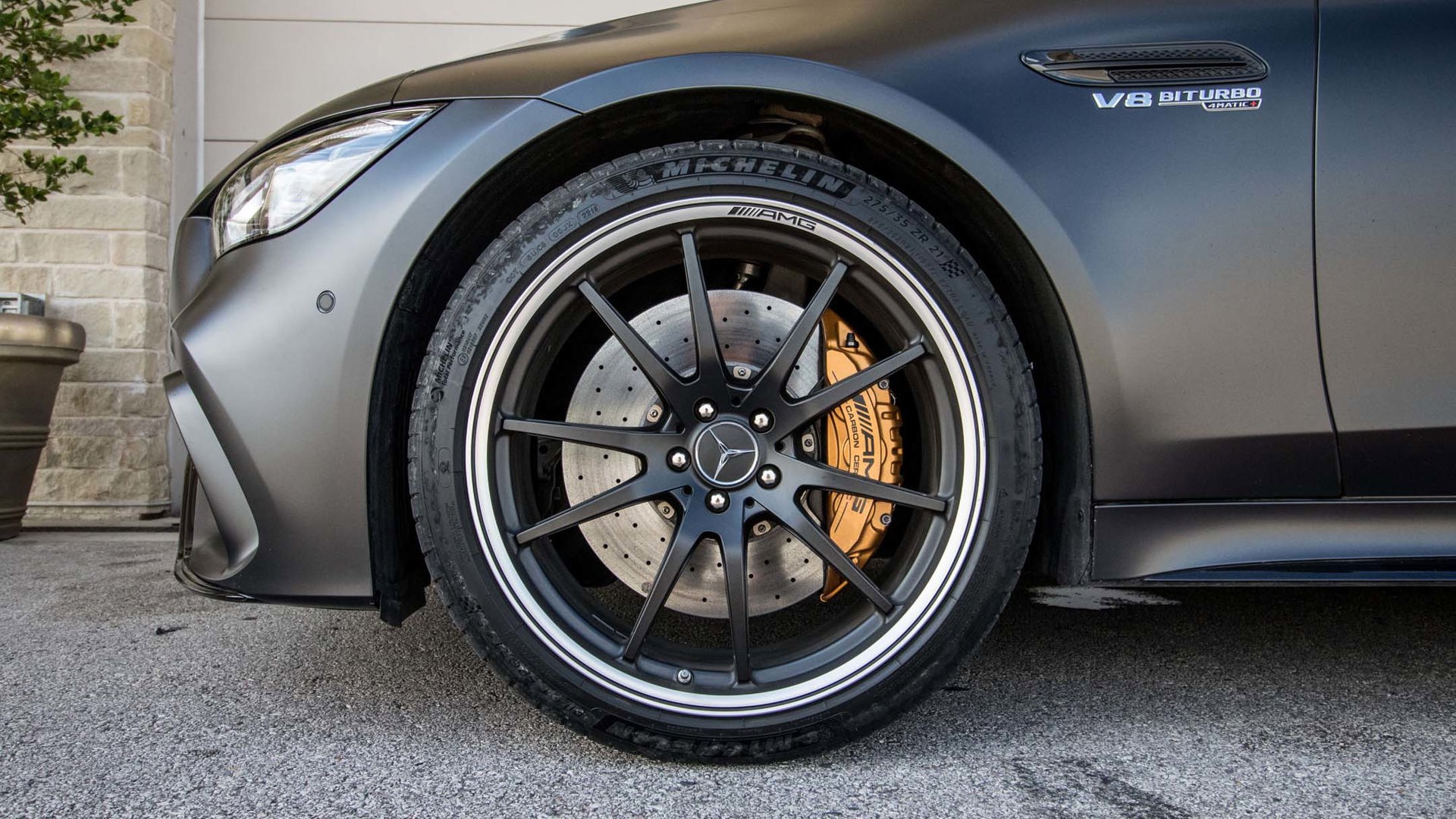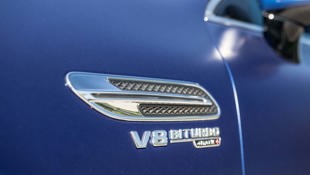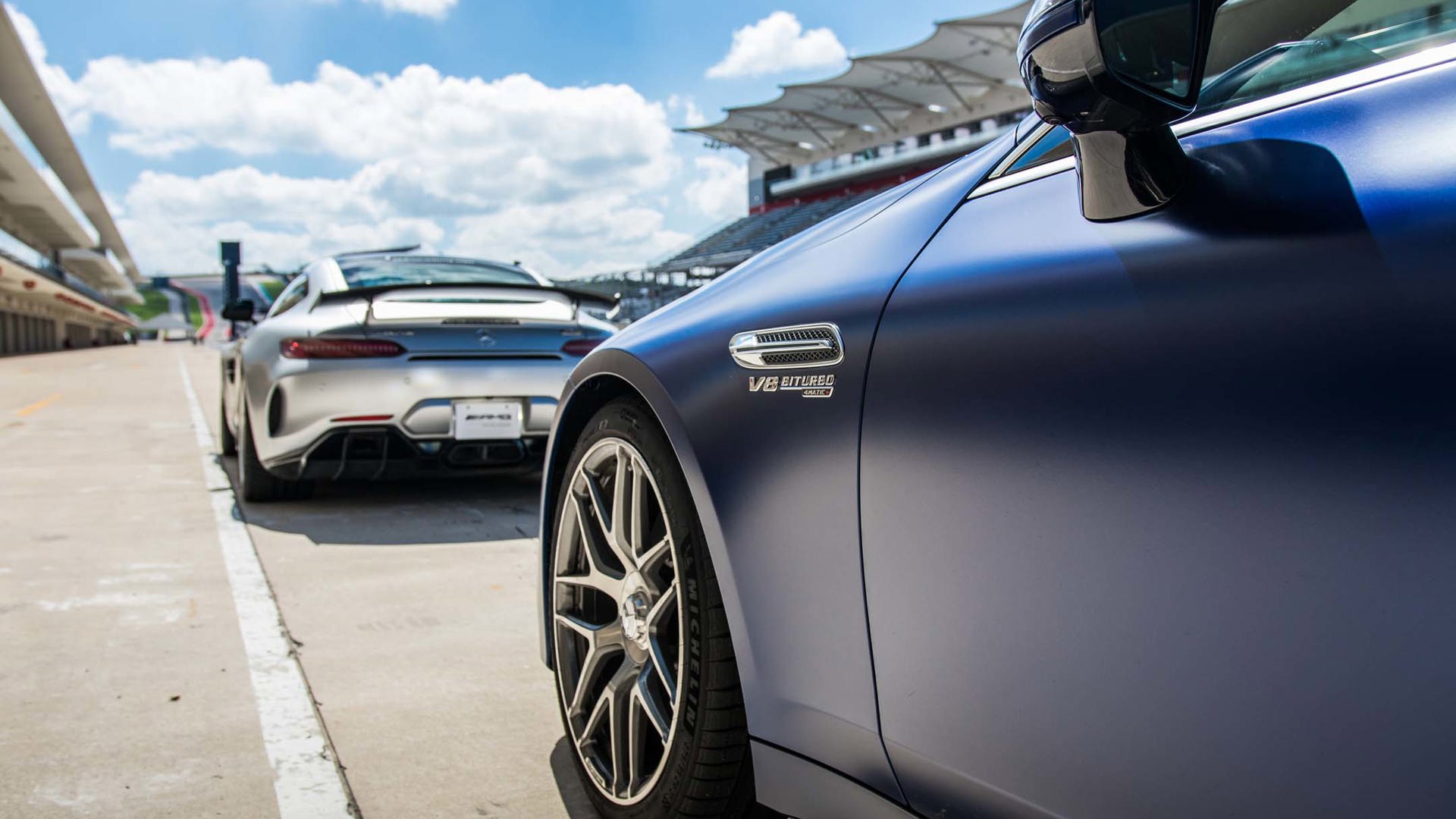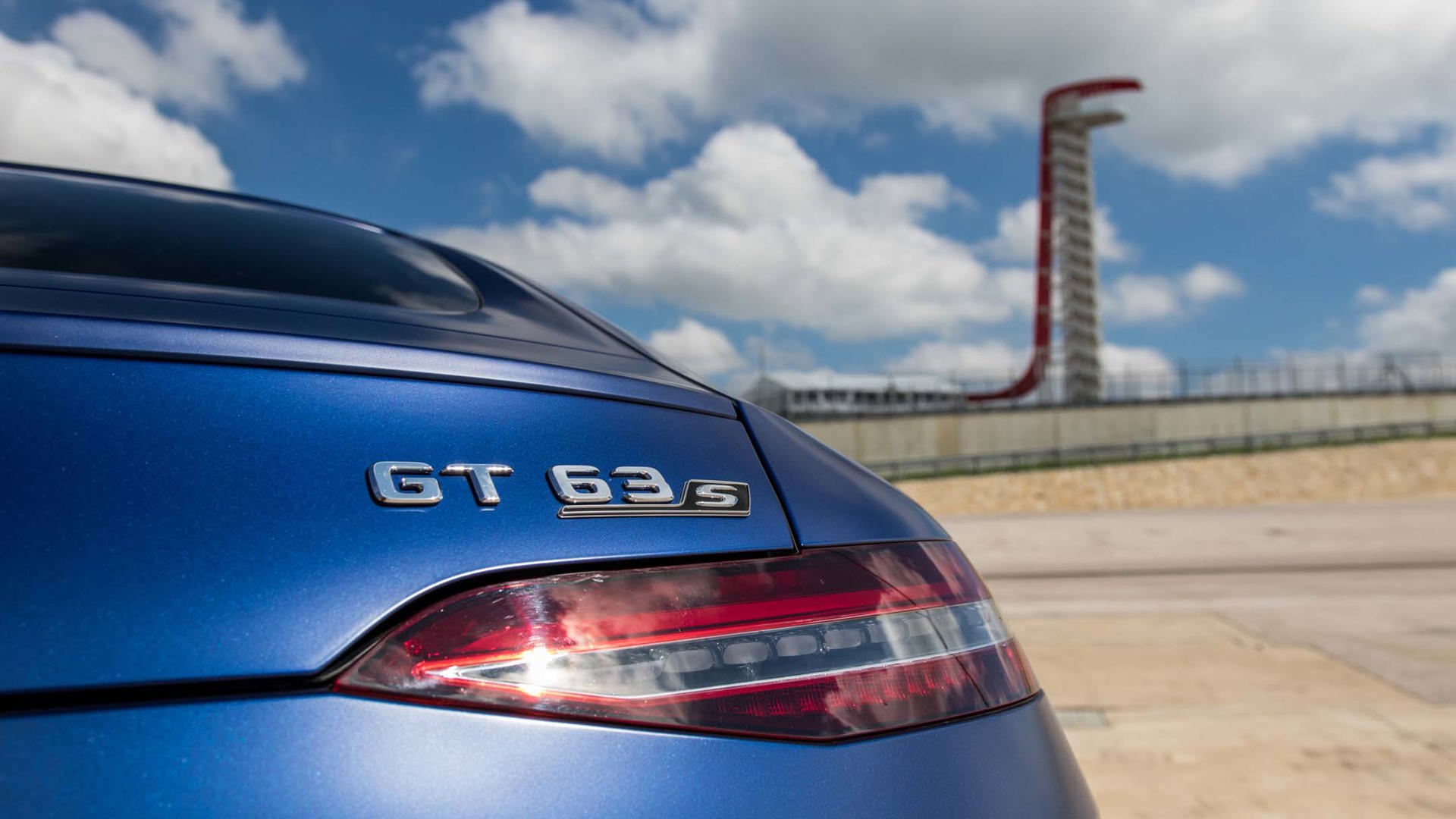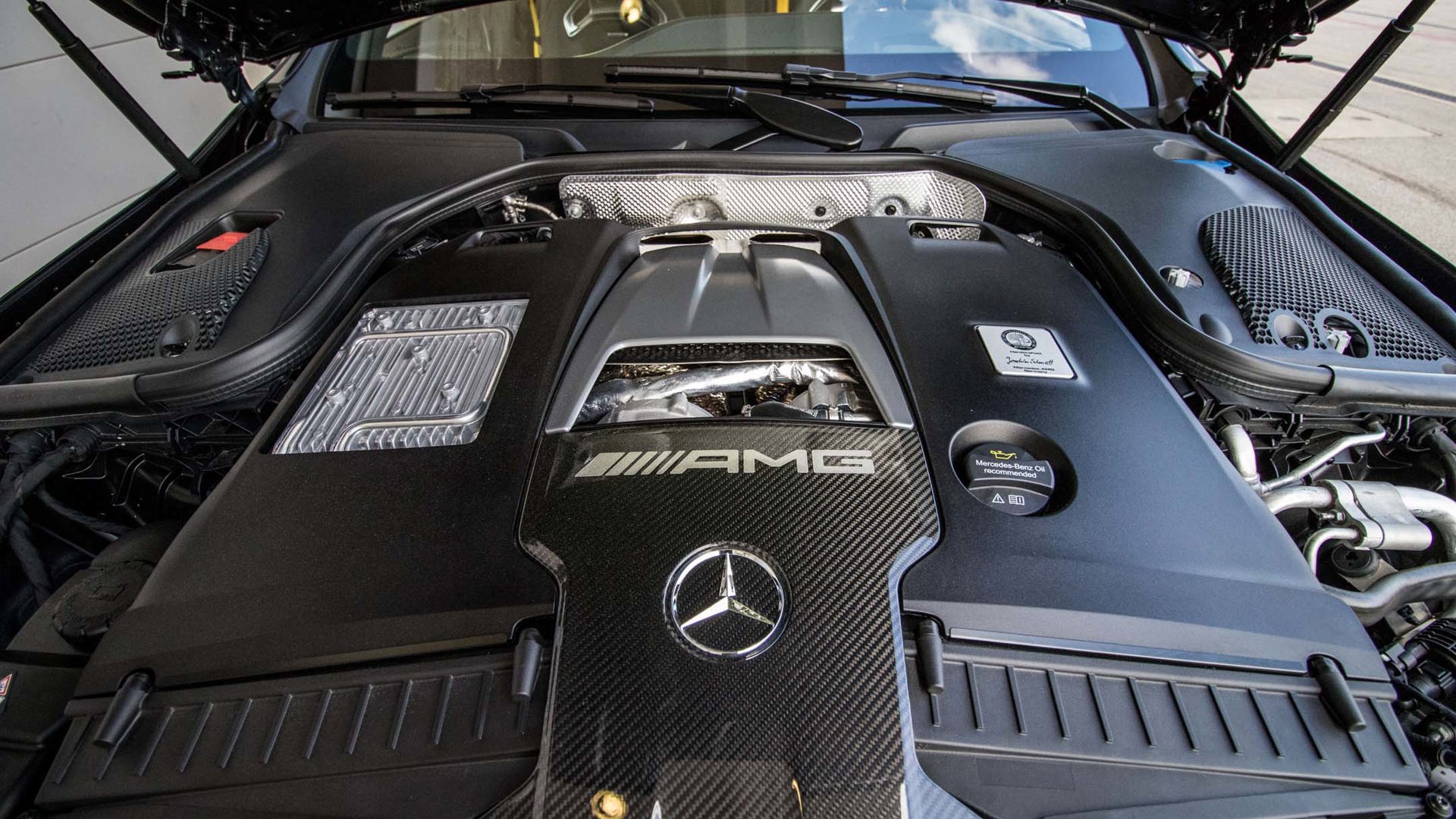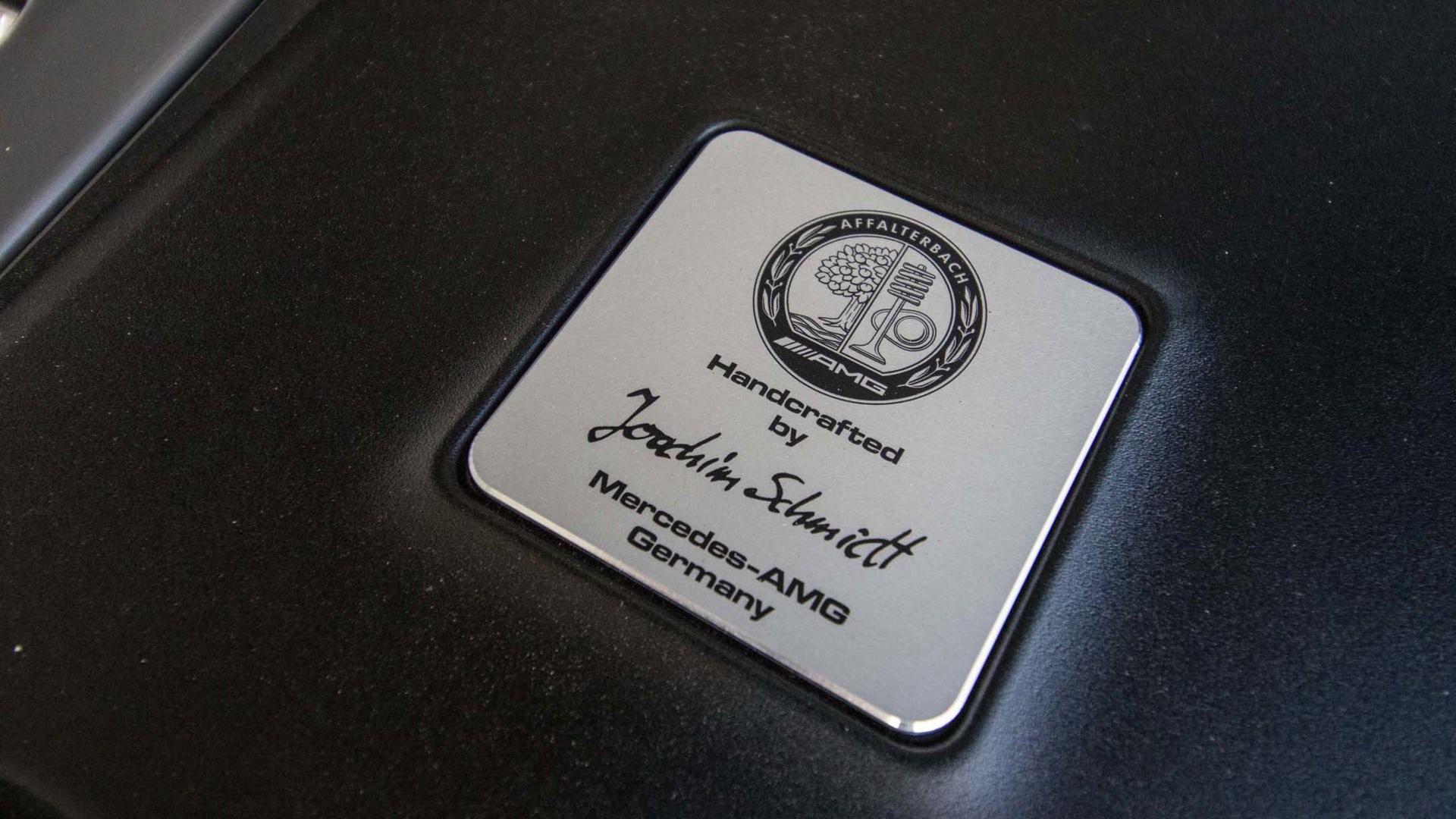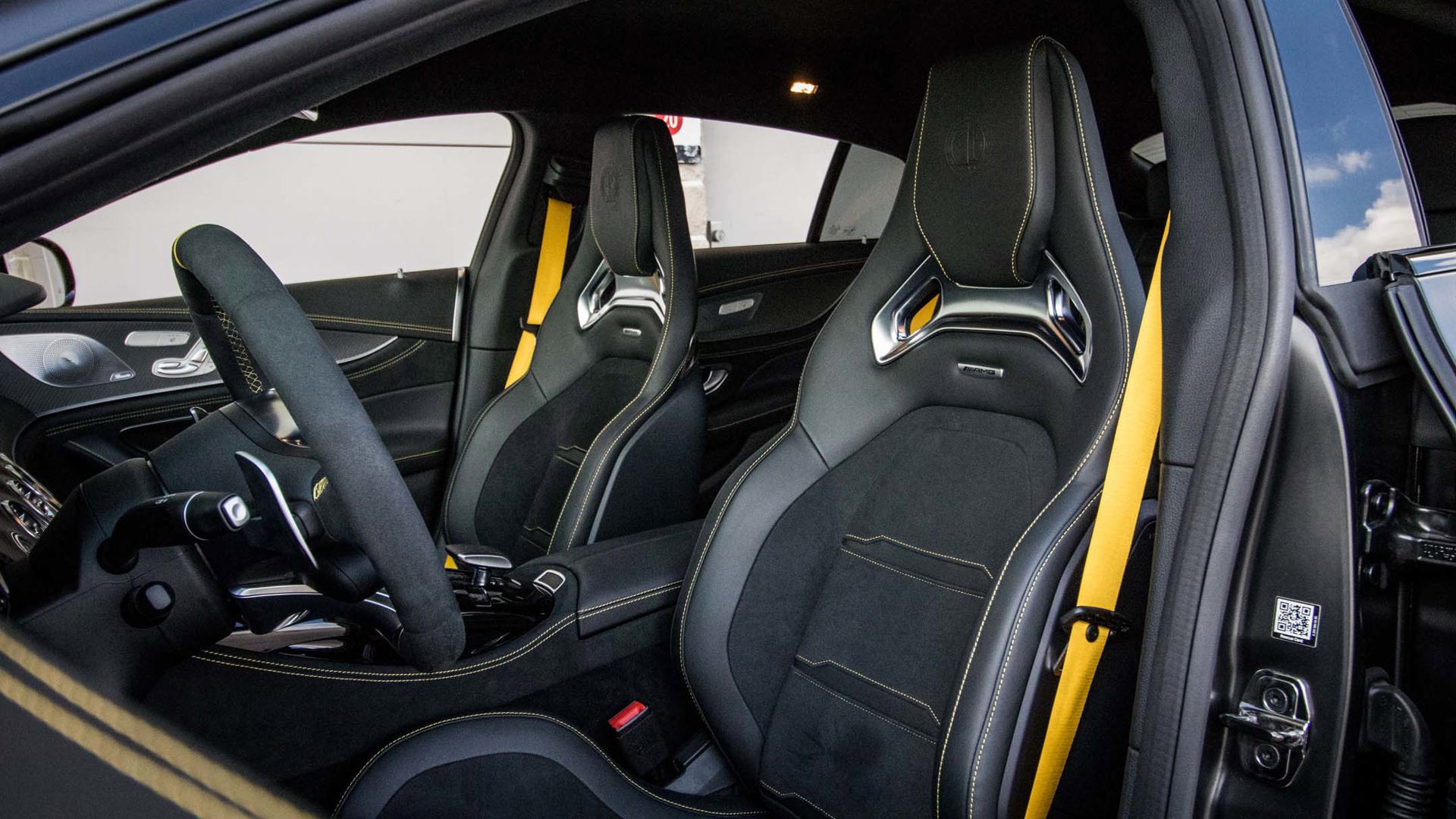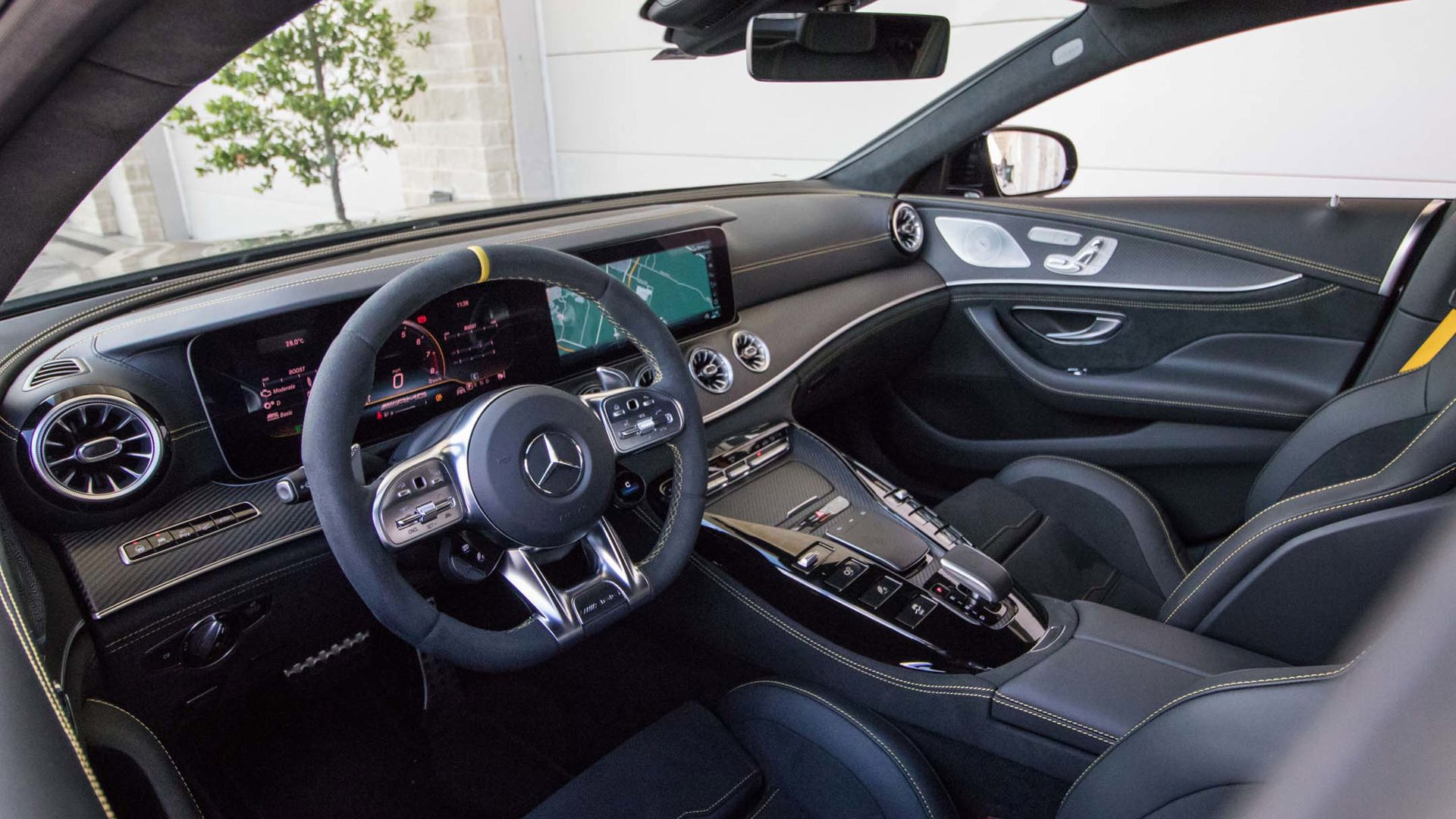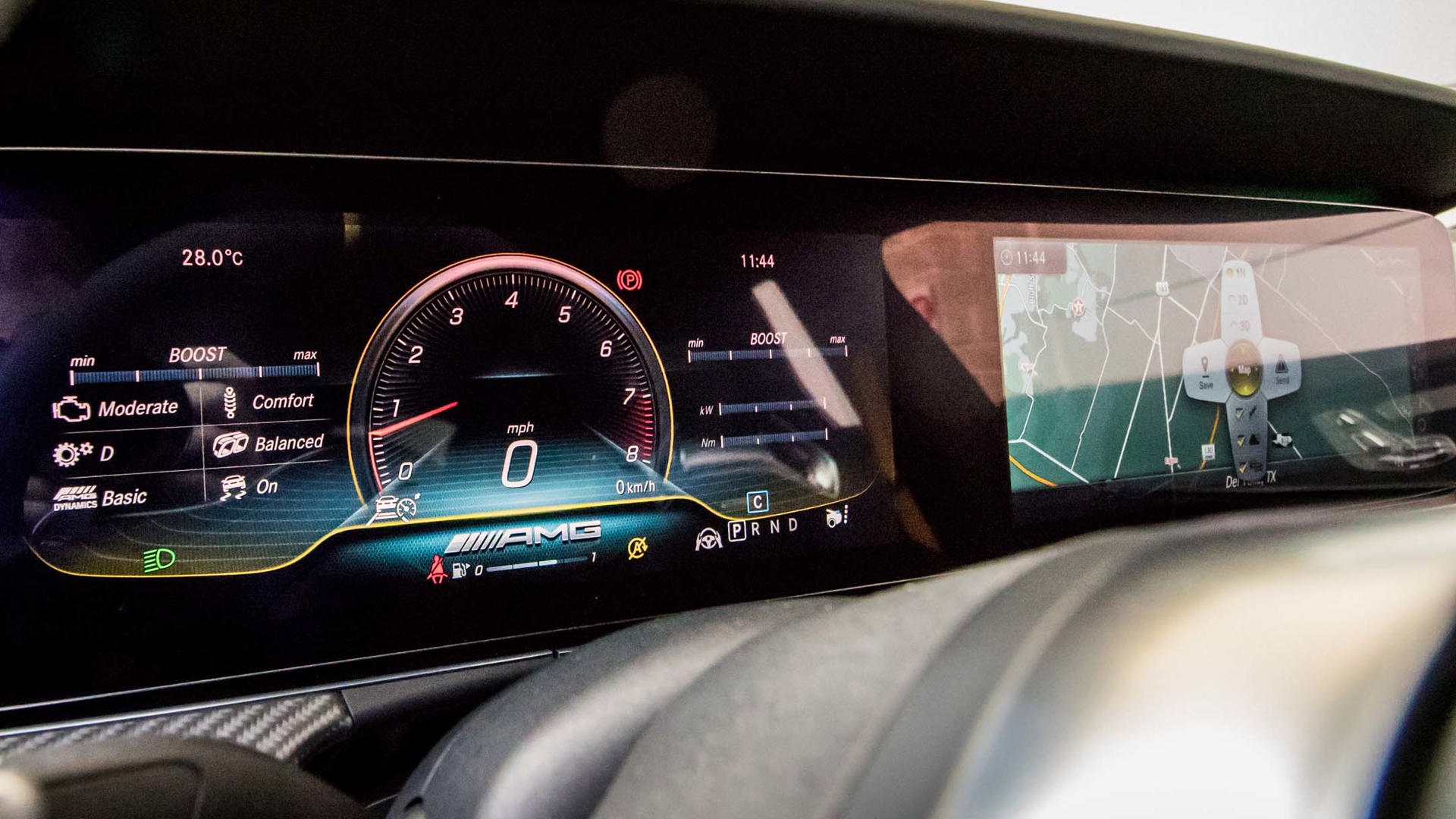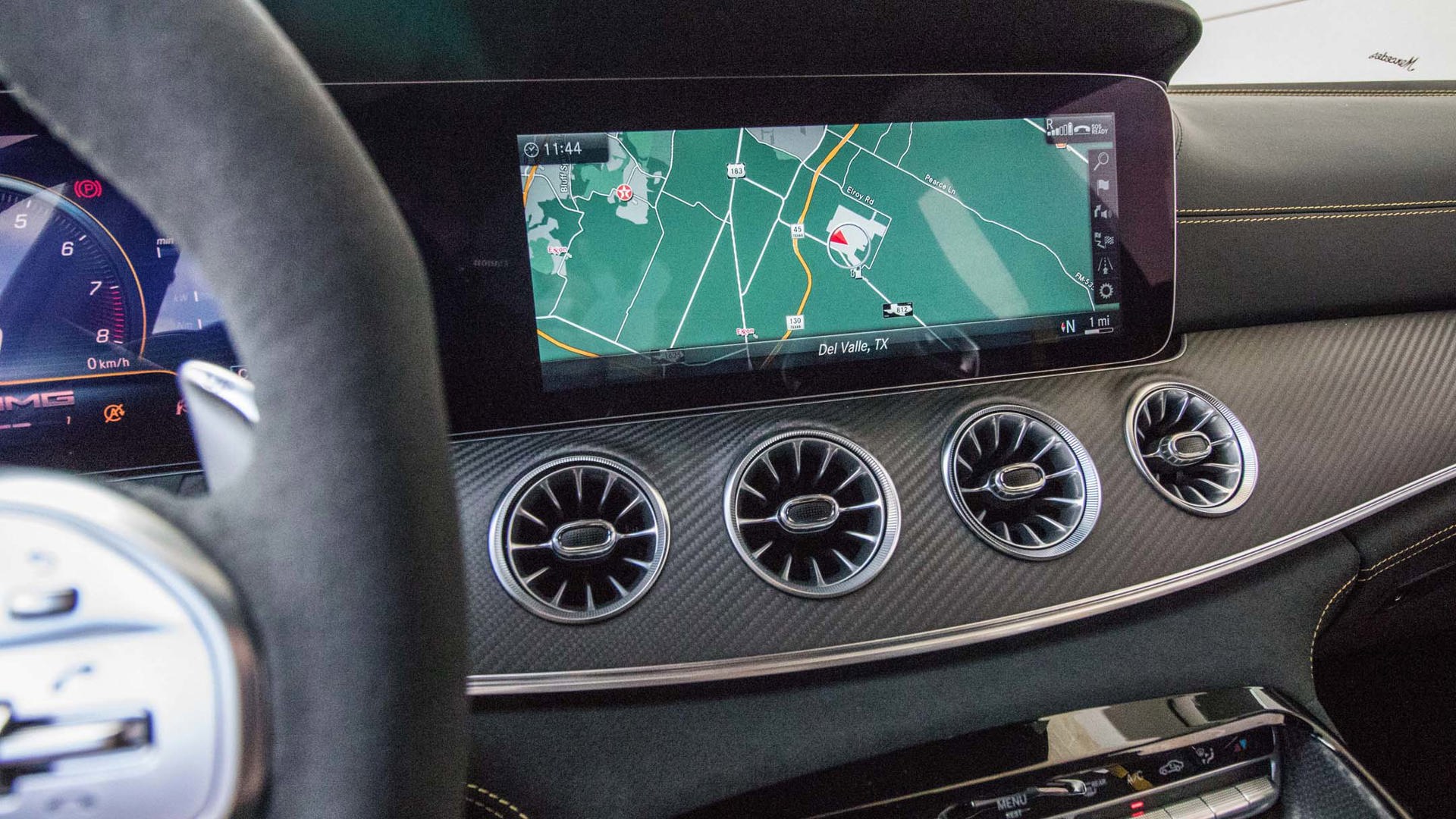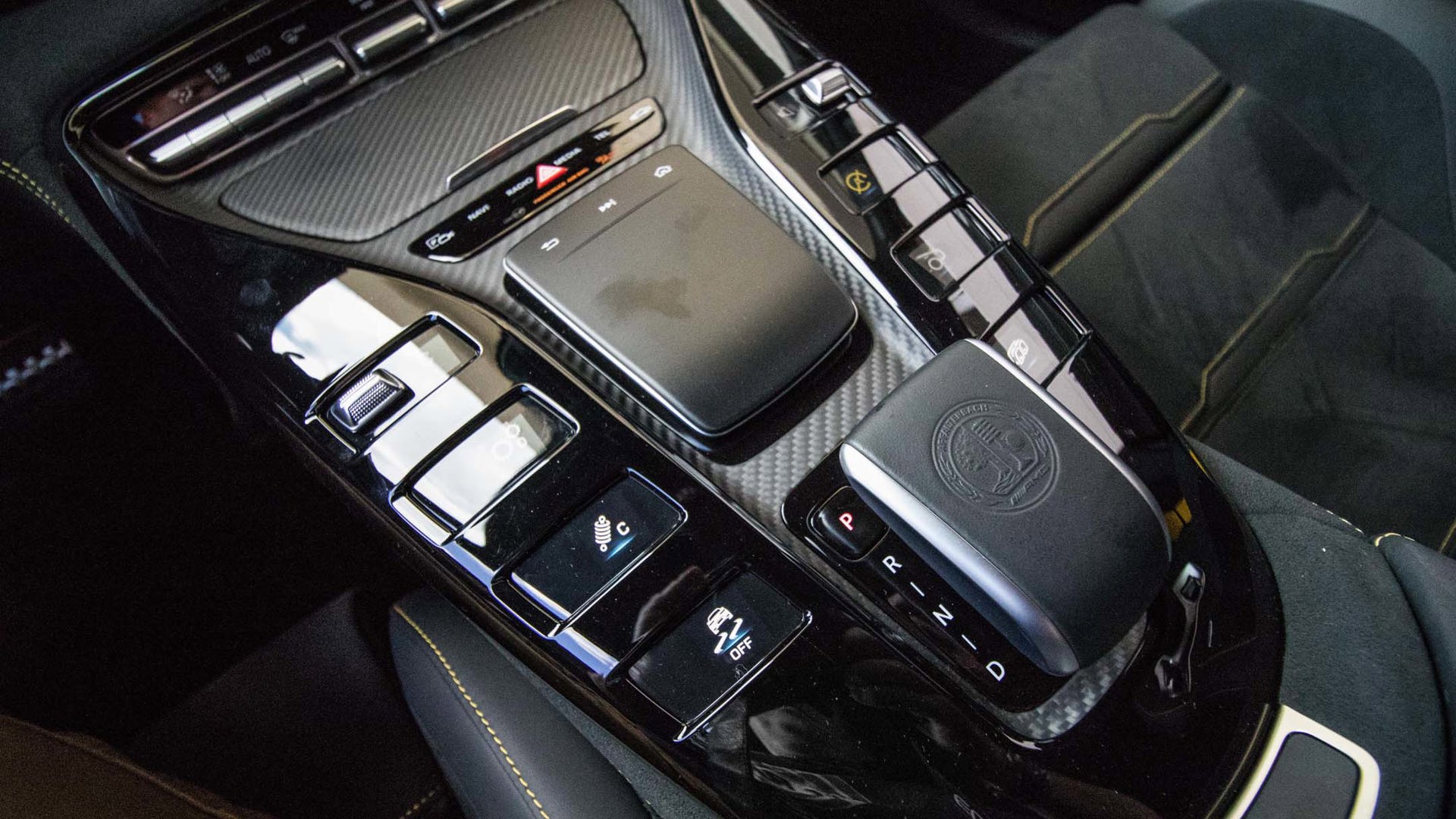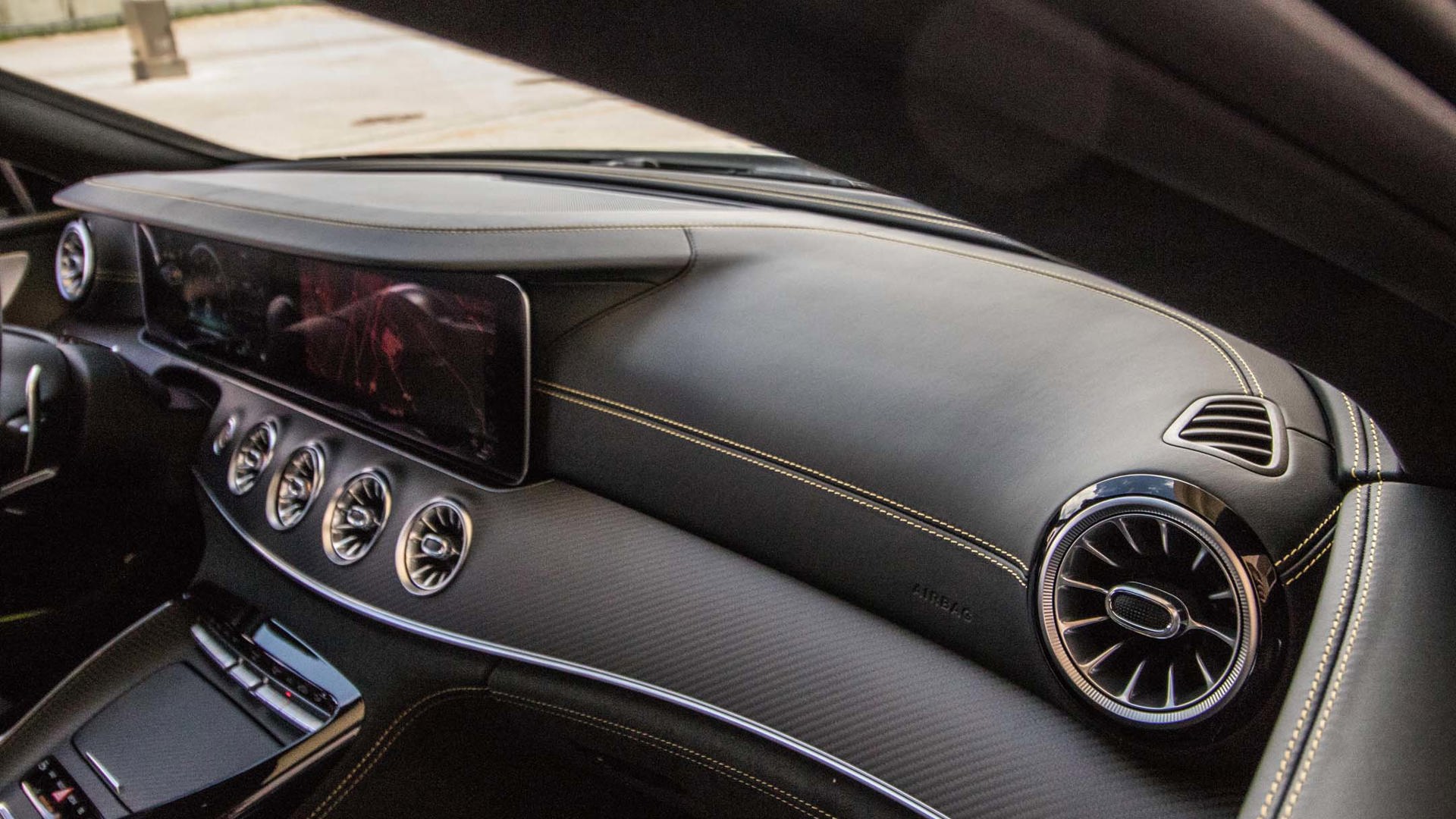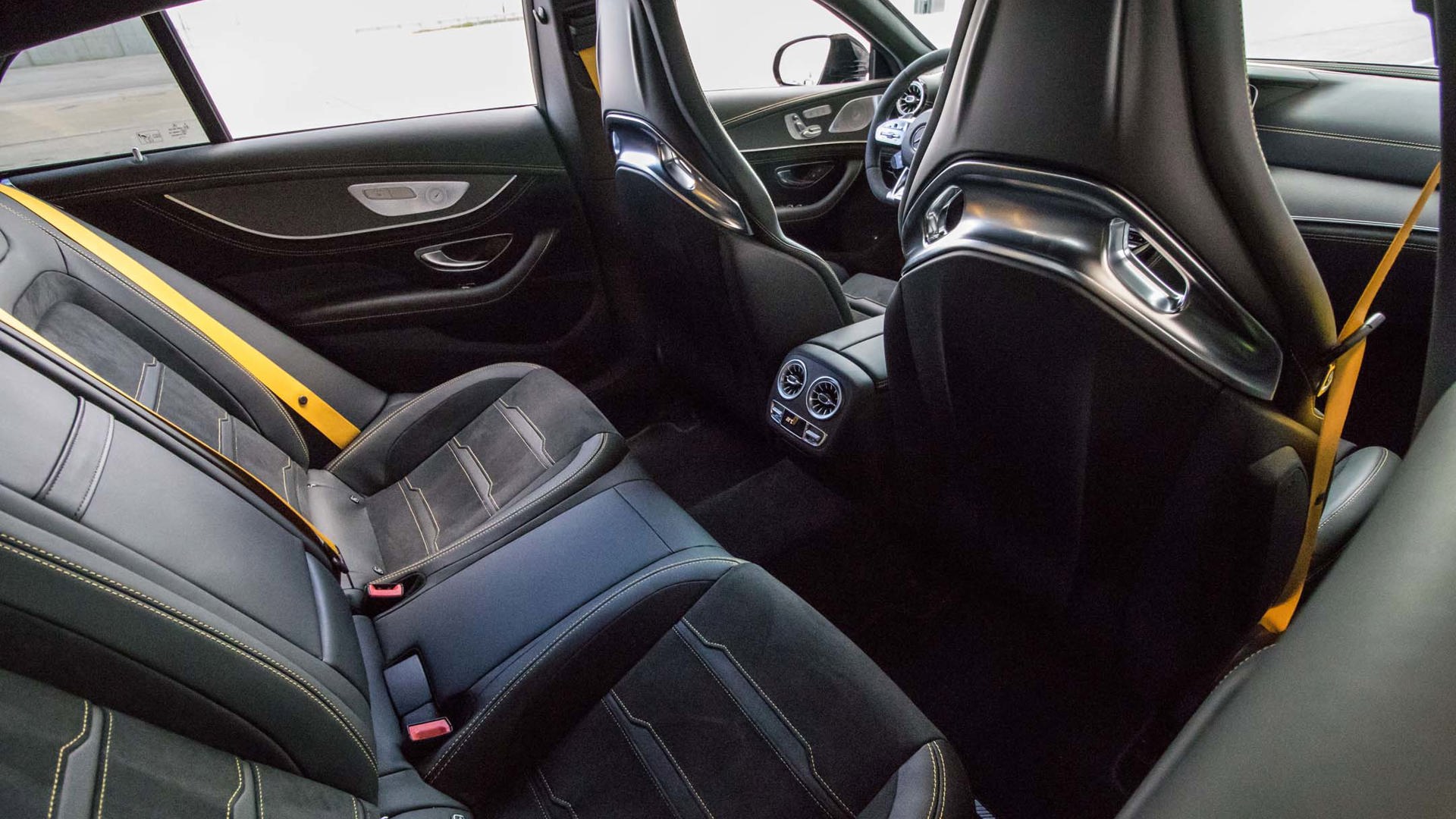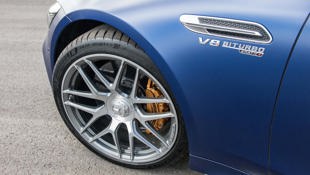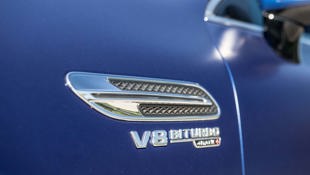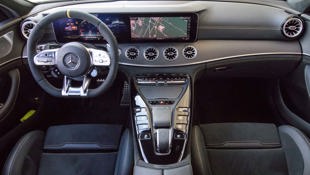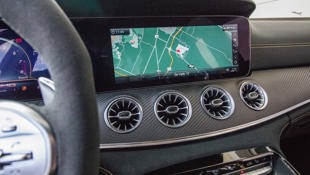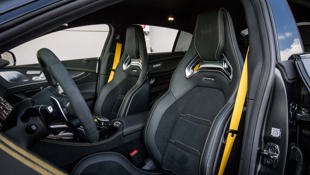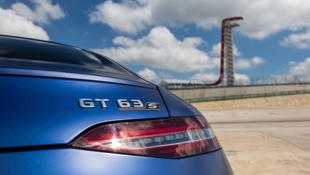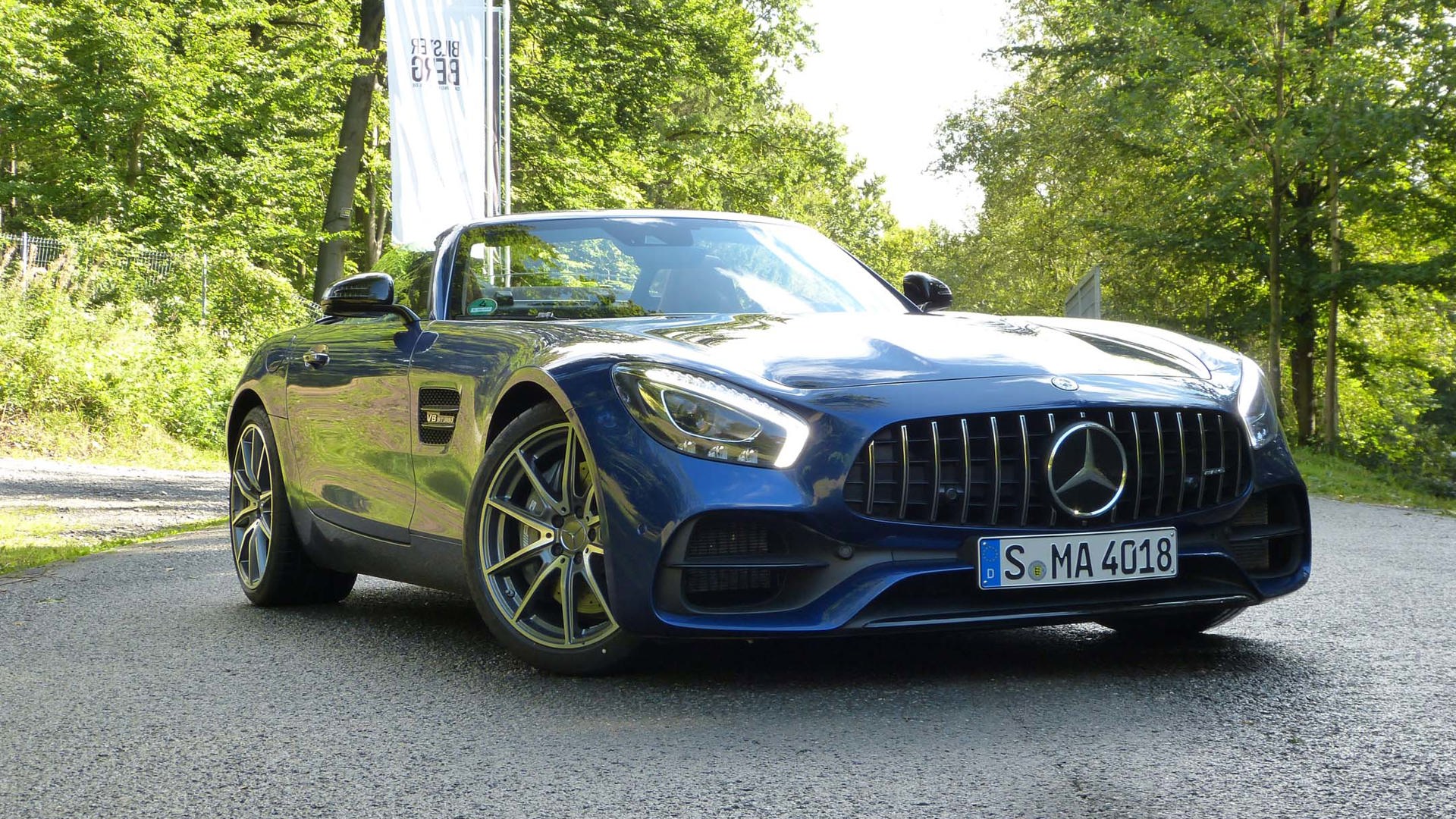Nearly thirty years ago, an observant bystander might have noticed a truck filled with unpainted chasses leave the gates of Porsche’s factory, headed to Mercedes-Benz. This was the 500E, an early super-sedan collaboration between the two companies. It was very popular with the F1 drivers of the day, and is just now becoming highly prized by collectors as a vehicle from a time when Porsche and Mercedes managed to get along. Now, though, they’re at war.
Does Sir Mix-a-Lot still have any royalty money left? He’s gonna want to buy three of these.
Here’s the latest escalation in the tensions between Stuttgart’s two major automotive manufacturers, the AMG GT 4-Door Coupe. Admittedly, the name is clumsy, but the car is not. Just as the AMG GT has its crosshairs squarely on the Porsche 911, this new four-door from Mercedes is aimed at taking away some of the Panamera’s success. Capable of seating four (or five – the twin rear bucket seats are optional), AMG hopes to deliver the sort of track-focussed experience you get from their GT range in a more family-friendly package.
By any other name
Right off the bat, there are a few complaints. First, speaking of combat, I at least am not willing to throw in the towel on words having meanings. Coupes have two doors. Sedans have four. Liftback sedans have four doors and a hatch. Yes, this new AMG may have a sleeker roofline than something like an Audi RS7, but it is not a coupe.
Secondly, this is not exactly a delicate flower. True, neither is the two-door GT, but it at least has a muscular elegance to it. The four-doored version has the body of a shotputter, more hulking strength than sleek understatement. The do-nothing fender vents are also regrettable. The blue, pictured here, is not too bad, but in the matte black colour favoured in press handouts, the car is particularly thuggish, as if Bertha Benz started tossing back ’roids and got herself a neck tattoo.
Mind you, this is a five-passenger rocket ship built by the company that built the Rote Sau and the Hammer. Ask an AMG engineer for subtlety and they’ll probably look at you blankly. “So sorry. It is not possible.”
Comfort and practicality on tap
Inside, things are much more balanced, as the GT 4-Door benefits from Mercedes’ work on the E-Class. Instrumentation is based around a sharp LCD screen stretching across three quarters of the dash. This floats above a swathe of carbon fibre, with easily adjustable vents.
The central controls are slightly different from the E-Class, partly because the gearshift has moved towards where your elbow is located. So, good news if you shift with your elbows. The Comand system is much easier to use than previously, although here it lacks the scroll wheel. Using voice commands is your best bet to navigate through the system safely, as entering addresses number-by-number, letter-by-letter is somewhat plodding.
Flanking the central control are two rows of buttons to control exhaust modes and suspension settings. Not satisfied with normal labels, AMG has used illuminated icons here. If you’d rather not hunt for specific selections, you can also use a quick switch on the lower right part of the steering wheel that allows you to toggle two different attributes (exhaust mode and suspension damping, for instance).
AMG has also moved their drive mode selector to a dial on the steering wheel, in much the same position as you’ll find it in a Porsche. It’s entirely intuitive to flick things to full race for a quick blast, then back to comfort mode for the long cruise.
Such long cruises should be relatively effortless. The GT 4-Door gets attractive-looking sport bucket seats that are less cushy than, for instance, an S-Class AMG, but certainly offer plenty of adjustability and comfort. Rear legroom is plentiful for average height adults; and despite the raked roofline, the lack of moonroof means that headroom is surprisingly good as well. For the executive with adult children to occasionally ferry around, the GT 4-Door will indeed function with genuine practicality.
For those who are looking for a full-strength AMG product, but need both the all-weather flexibility of all-wheel drive (more on that in a bit) and more space, the GT 4-Door delivers. Total capacity is 456 L, very comparable to the Panamera’s 500L, and the rear hatch and nearly-flat-folding seats make for maximum flexibility for cargo.
Of course, it’s unlikely that anyone considering the GT 4-Door is looking for best-in-segment cargo. If they were, they’d be far more likely to be purchasing an E63 wagon or similar. E63 wagon buyers are some of the most wealthy Mercedes owners, and could easily afford a GT (although prices have yet to be announced).
…and up to 639 hp too
Nor is the GT about straight-line pace only, although it’s certainly very fast. Two engine options will be available in Canada, the 63 with the hand-built 4.0L twin-turbo V8 making 585 hp (639 hp in the higher S trim), and the 53, with a 435 hp inline-six engine. Both get a quick-shifting nine-speed automatic, with the 63 and 63S equipped with a wet-plate clutch for faster responses.
The 63S, obviously, is the one you want for the track. Whether or not the 53 comes at enough of a savings over the big-dog option will have to wait for pricing, but it it’s a very technically interesting offering too. While not hand-assembled by AMG, the twin-turbo I6 has a certain amount of unexpected character, and more than sufficient power.
Its low-end torque is frankly surprising, thanks to a unique piece of engineering Mercedes calls EQ Boost. The 53 uses a 16 kW electric motor sandwiched between the engine and transmission as both starter and alternator. It can also draw on this electric power as a bit of extra boost, both for peak power output while passing and for off-the-line speed. The motor produces just an additional 22 hp, but has an instant-on 184 lb-ft of torque that takes away any hesitation while the turbos spool and the inline-six’s 383 lb-ft of torque hits at 1,800 rpm.
Around Austin’s streets, the ’53 provided all the power a sane person could ask for, in a body honed by the best technology the mad scientists of Affalterbach could dream up. We’re talking aluminum-intensive construction including hood and front fenders, major carbon-fibre components like the trunk cavity and rear wall, and reinforcements for rigidity based on AMG’s racing efforts.
Variable aerodynamics include a deploying rear spoiler for both high-speed stability and main street peacocking. There’s also adaptive air suspension, available composite brakes, and an all-wheel drive system that sends power primarily to the rear wheels, with the ability to apportion power to the front depending on drive mode selection.
Rear-wheel steering makes the car rotate more quickly. In "Slippery mode, the GT 4-Door gingerly metes out its power. In Drift mode, it fires things rearward, much to the delight of Michelin’s sales department.
To take all of AMG’s hard work and fit it with a mere inline-six (in the US, a V6-powered 43 will be available), is basically AMG blasphemy. The company’s roots are in taking an ordinary Mercedes, and shoehorning in the largest possible powerplant. To take their fully in-house-engineered super-sedan and fit a smaller-sized powerplant feels like anathema. The 53 is fine to drive, but a GT deserves something more special.
You want all 639 horses
And, with the 63S designation, it gets it. So what if the GT doesn’t have a dancer’s elegance? Stuttgart only needs one ballet school, and that’s Porsche. AMG doesn’t do dance. It does mixed martial arts.
A few weeks from now here at Circuit of the Americas (COTA), F1 champion Lewis Hamilton has more than a gambler’s chance at notching up more points in his drive to a fifth world championship. Today, the stands are empty, but the track is filled with Swabian thunder.
You expect an AMG product to be eye-peelingly fast, but the GT 4-Door’s prowess doesn’t merely extend to the way it hammers up to 260 km/h and beyond on the straights. Where this car defies its clenched-fist image is in the corners, where it simply shreds.
The two-door AMG GT is still a better stiletto in the way it turns in aggressively; the GT 4-Door has such huge reserves of grip that a driver can “cheat” with early throttle inputs. Once you get past the disturbing sense of huge mass carrying huge inertia, the 4-Door’s ability to shed speed and pivot on throttle is hilariously fun.
Finesse makes you faster, but the more you abuse this car, the better it likes it. The steering wheel offers plenty of feedback, such that a driver can back off steering input when over-driving the car into a corner. Add a little lift to settle more weight over the nose, and then throttle on early and feel the GT’s big backside shake like one of those rap guys’ girlfriends. Does Sir Mix-a-Lot still have any royalty money left? He’s gonna want to buy three of these.
As an FIA-certified F1 course, COTA is big, wide, fast, and technical. The GT can’t seem to put a foot wrong, with any running wide being down to driver ham-handedness. It’s endless fun and, what’s more, seemingly endlessly repeatable. If you intend to track your car, the GT’s deep reserve of talents will either make up for your faults, or allow you to keep posting up lap after lap until those faults have been erased. It’s not like wielding a Hammer at all, but a different sort of weapon. Heavy, but physics-defying. Seemingly blunt, but with an edge.
By comparison, the Panamera feels almost delicate, which is a sentence I’d never thought I’d write. It’s not a clear victory for either, with any showdown between the two being a bloody-nosed brawl.
When kingdoms are small, there’s room to breathe, and no reason to fight. But as ambition and appetite grow, the demand for territory frequently brings former partners into rivalry.
Almost without exception, these conflicts are good for consumers. It keeps the edges sharp, keeps the engineers hungry. Once upon a time, Stuttgart came together to build a single super-sedan. Now, you have to pick a side. And that’s good news.
